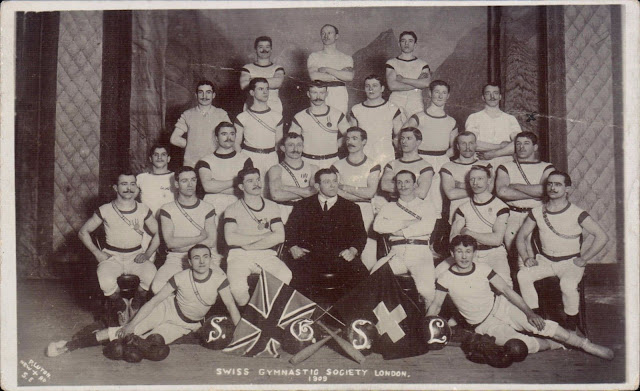An interesting find on a second hand stall in Lyme Regis over the summer was this brochure for The Press Arts School, a correspondence course in drawing run from Forest Hill. The brochure is undated but internal evidence suggests it was published during or shortly after the First World War.
The Press Art School was established by Percy Venner Bradshaw (1877-1965), who had studied art himself at a Goldsmith College evening class. In the 1901 census he is shown as living with his parents at 128 Drakefell Road SE14 but moved to 37 Dacres Road in Forest Hill SE23 after his 1910 marriage at St Catherine's Hatcham church.
The correspondence course was prompted by the success of a series of articles on drawing Bradshaw wrote for the Boys Own Paper. Founded in 1905, The Press Art School moved in 1911 to the Tudor Hall in South Road, Forest Hill SE23. This former mansion had been built in
1854/5 as The Red Hall, before becoming a private girls' school known as Tudor House school from 1865 to 1908.
The building housed the Press Art School until it closed in 1960. Much of it was demolished in 1961, though part of it remains as flats (the section shown on the right below).

At its peak the Press Art School was a major operation, training would be commercial artists and amateur enthusiasts who would send in their work for evaluation and criticism. By 1916, it had 3,000 students signed up and 20 staff. Many of the illustrators for UK newspapers and magazines started out with one of Bradshaw’s courses, including Norman Pett who created popular Second World War cartoon strip ‘Jane’ for the Daily Mirror. Sculptor Henry Moore took lessons while serving with the army in World War One. One of Bradshaw’s later students in the 1950s was Ralph Steadman who recalled in a
1989 interview with The Comics Journal:
‘I saw an advert which said, “The Percy V. Bradshaw’s Press Art School Course. You too can learn to draw and earn pounds.” So my mother and father who were by this time a little distraught because I didn’t have a proper job, and I didn’t know what I was going to do, said, “If you’d like to take the course, since you’re drawing now, we’ll pay for it.” It was 18 lessons: 12 lessons spread over 12 months on how to draw, and the other six months learning how to be a cartoonist. The whole course cost 18 pounds — a pound a lesson, something like that — very cheap. My mother and father paid for it and then I went into the forces and whilst I was in the forces I did the course. I wish I kept the letters from Percy V. Bradshaw to me because of my complaints about the old-fashioned style of the course, and he’s saying, “Ah, my boy, the principles of drawing never change.” He’d get me to draw a pair of boots, put them on a table and draw them in dots, a pointillism technique, and gradually build up a pair of boots, and that would give you a sense of tonality. And then I’d do these various exercises and send them back to him. The guy would do a fairly descriptive criticism of what was either wrong or right... the cartoon course was very interesting. What he said is, “What you need to do is go out into public places and look at the people and keep a sketchbook and that way you’ll learn something about caricature”’.

Bradshaw engaged other illustrators to comment on students work, the best known of these tutors being W.Heath Robinson.































